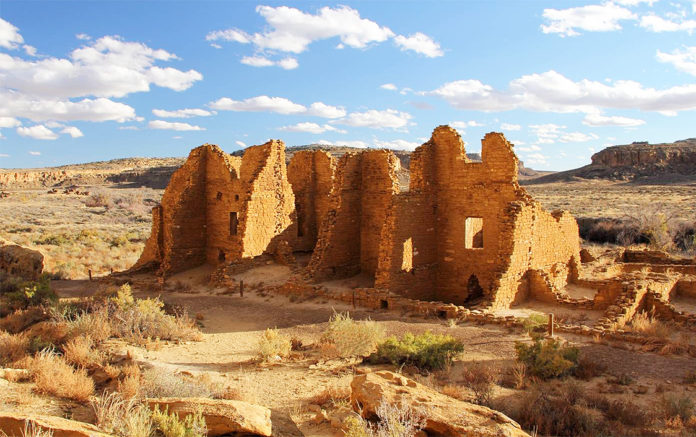WASHINGTON, D.C. – During the 2022 White House Tribal Nations Summit, the Departments of the Interior, Agriculture and Commerce outlined a series of new steps the agencies are taking to increase and strengthen tribal participation in the management and stewardship of federal lands and waters.
Last year, Secretary of the Interior Deb Haaland and Secretary of Agriculture Tom Vilsack signed Joint Secretary’s Order 3403 (S.O. 3403) committing to tribal and federal co-stewardship of federal lands, waters and wildlife, including through collaborative and cooperative agreements with tribal nations.
Since S.O. 3403 was signed during the 2021 White House Tribal Nations Summit, the Departments have celebrated several significant and innovative co-stewardship arrangements providing tribes a greater role in the management of federal lands and waters that have cultural and natural resources of significance and value to their respective communities. Since last year’s Summit, the Interior Department and USDA Forest Service have signed over 20 new co-stewardship agreements with tribes, Alaska Native Corporations and consortiums, with more than 60 additional agreements under various stages of review.
“From wildfire prevention to managing drought and famine, our ancestors have used nature-based approaches to coexist among our lands, waters, wildlife and their habitats for millennia,” said Secretary Haaland. “As the United States works to honor our treaty and trust responsibilities to protect tribal sovereignty and revitalize tribal communities, we must also protect access to resources for subsistence, and cultural and spiritual practices. By acknowledging and empowering tribes as partners in co-stewardship of our country’s lands and waters, every American will benefit from strengthened management of our federal land and resources.”
“USDA is working hard to ensure that tribal nations are our partners in federally managed lands,” said Secretary Vilsack. “This co-stewardship announcement is one of many efforts to enhance tribal self-determination in our policies and programs. In particular, USDA is excited to highlight 11 new co-stewardship agreements, and to share that tribes and the Forest Service have over 60 more co-stewardship agreements in process, a historic milestone.”
The Department of Commerce announced that it will join in this effort by signing onto S.O. 3403. This commitment furthers an all-of-government approach to co-stewardship and ensures that additional agencies – like the National Oceanic and Atmospheric Administration (NOAA) within Commerce – will further the administration’s co-stewardship goals in their management of waters, fisheries and other resources of significance and value to tribes across multiple agencies.
“The Department of Commerce is pleased to join this important effort to build upon our commitment to protect the treaty rights and interests of federally recognized Indian tribes,” said Commerce Secretary Gina Raimondo. “As we work to fulfill our mission to create the conditions for economic growth and opportunity for all communities, it is vital that our actions at the Department honor our trust responsibility to protect tribal rights and further the nation-to-nation relationship with tribes. Through this Order, we will ensure that these important responsibilities remain central to our management of federal trust resources. We also recognize the vital importance of getting indigenous knowledge into federal decision-making and one of the best ways to do that is through co-stewardship.”
Additionally, the Departments of Interior and Agriculture announced the following steps to continue implementing S.O. 3403:
- Annual Reports: The Interior and Agriculture Departments released their first-ever annual reports on tribal co-stewardship, which outline implementation of S.O. 3403 and enumerate landmark agreements that the agencies have entered into since it was signed more than a year ago – each of which provide clear benefits to tribes, the federal government, and to public lands, waters and wildlife.
- Co-Stewardship Authorities: The Interior and Agriculture Departments have completed legal reports by their Office of the Solicitor on current land, water, and wildlife treaty responsibilities and authorities that can support co-stewardship and tribal stewardship. The reports are intended for use by staff as a resource for exploring and developing opportunities for collaborative and cooperative stewardship arrangements. The reports cover a wide range of authorities, from bureau-specific statutes and regulations to authorities that apply Department-wide, to doctrines and authorities that are relevant to all federal agencies.
- Implementation Support: The Interior Department is chartering two intra-Departmental bodies to fulfill the policies and objectives of S.O. 3403. The Committee on Collaborative and Cooperative Stewardship will represent the Department’s land-management bureaus in working with the Department’s regional executive teams to ensure that all bureaus and field units implement co-stewardship in an integrated and coordinated way. Working alongside the Committee, the Office of the Solicitor Working Group on Collaborative Stewardship will provide a forum for Associate, Regional, and Field Solicitors to identify, discuss, and coordinate on co-stewardship-related legal issues. The Department’s policy and responsibilities for collaborative and cooperative stewardship of federal lands and waters with tribes and the Native Hawaiian Community are memorialized in a new Departmental Manual chapter.
- Indian Affairs Co-Stewardship Guidance: The Bureau of Indian Affairs (BIA) released new guidance to improve federal stewardship of public lands, waters and wildlife by strengthening the role of tribal governments in federal land management. The new policy memorandum outlines how BIA will facilitate and support agreements with tribes to collaborate in the co-stewardship of federal lands and waters pursuant to S.O. 3403. This supplements recently released co-stewardship guidance from the Department of the Interior’s Bureau of Land Management, U.S. Fish and Wildlife Service, and National Park Service.
During last year’s Tribal Nations Summit, President Biden announced that the Interior Department would protect the Chaco Canyon landscape in northwest New Mexico, including by initiating consideration of a 20-year withdrawal of federal lands within a 10-mile radius around Chaco Culture National Historical Park, which would bar new federal oil and gas leasing on those lands. The Bureau of Land Management and Bureau of Indian Affairs also announced a new milestone in the Honoring Chaco Initiative, a joint effort to ensure that public land management of the region better reflects the sacred sites, stories, and cultural resources in the region. Based on dozens of interviews, planning sessions and meetings with tribal Historic Preservation Officers, tribal organizations, tribally led non-governmental organizations and other intergovernmental stakeholders, the bureaus are releasing a written report compiling key issues and recommendations for how to continue effectively implementing the initiative.















































